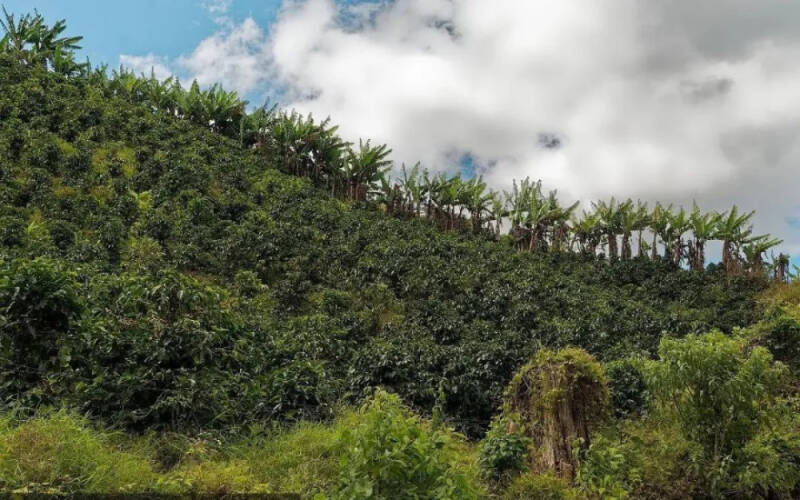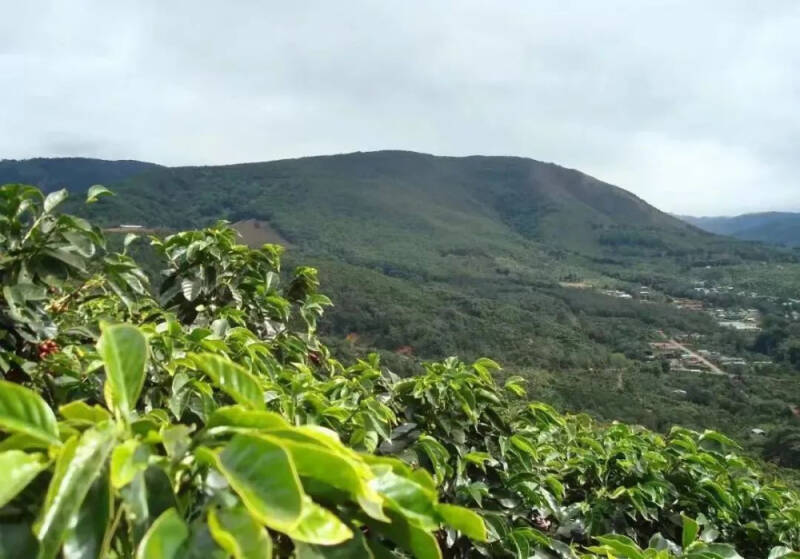Costa Rican Coffee beans | introduction to Strawberry Candy in Milasu Manor in Tarazu area
In Central America, coffee is grown in many countries because it is located in the coffee growing belt, including many well-known coffee producing countries, such as Guatemala, Honduras, Nicaragua, Panama, Costa Rica and so on. Costa Rica is the 14th largest coffee producer in the world and the first country in Central America to grow coffee, and since 1989, Costa Rican law has banned the cultivation of robusta coffee beans.
Costa Rica
Costa Rica is located in the Central American Strait, bordering Nicaragua and Panama, the Caribbean Sea to the east and the Pacific Ocean to the west, with a coastline of 1290 kilometers. The coastal tree plain of Costa Rica is cut off by rugged mountains in the middle, and the country has more than 200 volcanoes.

Costa Rica has a tropical and subtropical climate, with year-round wind, rainy and dry seasons. Coffee is mainly grown in volcanic areas and fertile soil with low acidity, and more than 80 per cent of coffee producing areas are located between 800 and 1700 meters above sea level, with temperatures ranging from 17 ℃ to 28 ℃ and annual rainfall of 2000 to 3000 mm, making it an ideal place to grow coffee. And the Costa Rican government attaches great importance to the cultivation and quality of coffee. The Costa Rican Coffee Institute ICAFE was established in 1933 to study coffee varieties and cultivation and to promote Costa Rican coffee around the world.
Tarazhu producing area
There are eight coffee producing areas in Costa Rica-Western Valley (Valley Central Occidental), Central Valley (Valley Central), Tarazu (Tarrazu), Sanshui River (Tres Rios), Orosi (Orosi), Brenka (Brunca) and Turrialba (Duli Alba), almost all of which are distributed in the central mountains.
Among them, Tarazhu producing area is the largest and most well-known producing area in the country, and it is also the first producing area to be certified of origin. The producing area is located in central Costa Rica, in the province of San Jose, affected by warm and humid air from the Pacific Ocean, with annual rainfall of 2400 mm, and coffee grows in fertile volcanic soil at an altitude of 1500-2100 meters. As the region is relatively famous, Costa Rica registered the coffee origin name "Caf é de Tarraz ú" with the European Union and the World intellectual property Organization (WIPO) in 2019 to protect the coffee produced in the region. Qianjie Coffee has a washed Costa Rican Tarazu coffee bean, as an entry selection, with slightly sour, sweet orange, nutty and honey flavor.
Milasu Manor
Milasu Manor is a smaller coffee estate in the Tarazu producing area, which is managed by Esteban Sanches and his family. Esteban was originally a member of the family of Candle Manor next door. Because of his love and insistence on coffee, he set up a separate estate and named it "Milasu Mirazu", which means "overlooking Tarazu".

The owner of the manor, Esteban, graduated from the coffee department of the Agricultural University of Costa Rica with a professional degree, and put what he learned into the manor. In addition to trying to grow the Ethiopian native species ET47, he does everything from design to assembly of the small wet treatment machines at the manor treatment plant.
Coffee variety
This coffee bean is special. It is composed of 50% rose summer and ET47, SL28 and MAICO. The rose varieties were originally collected from the coffee forests of Ethiopia. From there, it was sent to the Lyamungu Research Station in Tanzania and then taken to the Tropical Agricultural Research and Teaching Centre (CATIE) in Costa Rica in 1953, where it was registered as T2722. After being recognized as resistant to coffee leaf rust, it was distributed throughout Panama through CATIE in the 1960s and became famous in Panama.
ET47 is a native species from Ethiopia. In the 1990s, the Costa Rican Coffee Institute sent many varieties to farmers in Tarazhu as research species to prevent leaf rust, using numbers as numbers to identify varieties.
In addition, SL28 is in the late 1930s, the Kenyan government commissioned the former Scott Agricultural Laboratory (now the National Agricultural Laboratory) to select 42 varieties to study their yield, quality, drought and disease resistance. SL stands for Scott Laboratories, the abbreviation of Scott Laboratory, SL28 is one of them. In genetic testing, SL28 originated from the bourbon variety, although the yield is low, but it has a great sense of sweetness, complex and varied fertility, as well as significant sensation, Wumei characteristics.
Front Street Coffee Costa Rica Milasu Manor Strawberry Sugar Coffee Bean producing area: Tarazu Manor / processing Plant: Milasu Manor elevation: 1700 meters above sea level: rose summer ET47 MAICO SL28 treatment: raisin honey treatment flavor: raisin strawberry candy rose cream
The strawberry sugar coffee beans of this Milasu estate in Costa Rica from Qianjie Coffee are treated with grape dried honey and moderately roasted. In front of the street, the proportion of V60JEL is 15, and the water temperature is 92 ℃. You will smell fresh rose flowers and taste strawberries, raisins and almonds in the mouth, which is very sweet and silky.
Important Notice :
前街咖啡 FrontStreet Coffee has moved to new addredd:
FrontStreet Coffee Address: 315,Donghua East Road,GuangZhou
Tel:020 38364473
- Prev

Personality is still a problem! Manner's own cup label is controversial.
▲ Click to follow | Daily boutique Coffee Culture Magazine Coffee Workshop friends who have been on a plane should have seen the staff put a consignment label on their suitcases so that they can find the suitcase with the label information when the plane lands. And the more places you go, there will be more labels on the suitcase, all kinds of labels.
- Next

How to improve the perception of coffee flavor? Coffee flavor wheel ultra-clear picture quality! How do I use it? What is the fragrance of hand flushing made of?
The flavor of coffee is rich and changeable, attracting countless people to indulge in it, scrambling to feel the "glance" that stays in the mouth! This also leads to more expensive coffees that are born with outstanding flavors. So, if we want to feel where the expensive coffee comes from.
Related
- Why does hot American coffee taste bitter? Difference in proportional concentration between hot American and ice American
- Is espresso stored overnight in the refrigerator harmful to your body? Is frozen coffee better than freshly ground coffee?
- What parameters and proportions of water temperature should be used to grind and brew fresh coffee beans? Why can't I drink freshly roasted coffee right away?
- Customers have "changed" Manner's new products! Shop assistant: Please don't mess around!
- Remove sockets in customer areas at Starbucks stores?! Netizen: I won't go if I really tear it down
- What is the difference between the taste steps of sun-dried coffee and washed coffee? Why is sun-cured coffee sweeter and washed coffee sour?
- The recipe for salty grapefruit dirty is revealed! Coffee Festival salty grapefruit dirty coffee making materials parameters ratio milk share!
- How about the flavor of Sunlight 74158 at Sidamo Banshaha Mathieu Processing Factory in Ethiopia? 74158 Share the proportion of coffee brewing parameters!
- What effect does Italian American coffee with filter paper have? Will coffee taste better if it is put on filter paper at the bottom of the powder bowl?
- What is the color difference in coffee beans? What are the characteristics of honey processed coffee beans? Why are the anaerobically treated coffee beans uneven in color?

